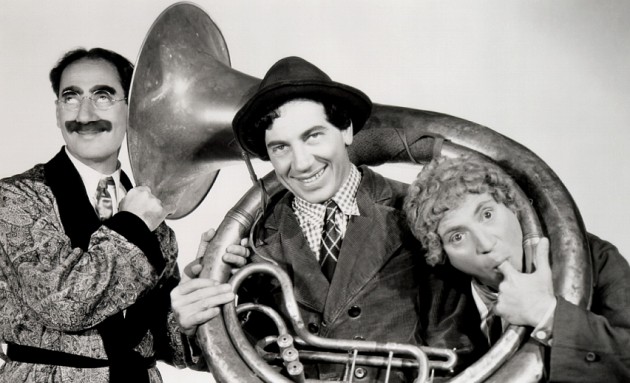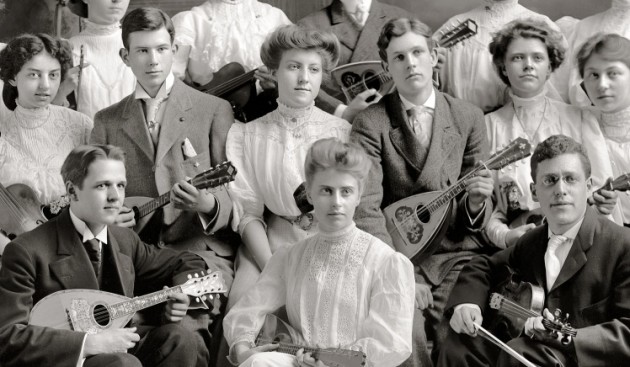Works
“The defunct popular composer not only becomes immortal in the poetical sense, but, by a curious felicity which publishers can best explain, actually goes on composing after he is dead… making eternal new songs, and putting drawing-rooms in commotion” – A French Music magazine of 1839, evidently confusing Schubert with someone else.
“This heaven-inspired clairvoyant who, as it were, simply shook his most glorious things out of his sleeve.” – Carl von Schönstein
Schubert didn’t mess around when it came to his influences – he went straight to the big names of Vienna’s musical life, to Haydn, Mozart and Beethoven, the James Brown, Beatles and Led Zeppelin of classical music (yes, I’m carrying on with these terrible analogies) and took different lessons from each of them at various stages of his life. From Haydn, he borrowed the obsessive focus on a single motif which is gradually transformed, and from Beethoven a new intensity, power and complexity. He also benefited from being trained by Salieri. However, listening to almost any Schubert piece reveals the pervasive influence of Mozart, as his transparent melody and insistent tunefulness seeps into every bar. Unlike many later Romantics, he also adopted the work ethic of his predecessors, producing almost a thousand works in his short lifetime.
But Schubert was far more than the sum of his influences, evolving a unique and idiosyncratic style which sprawled out beyond the narrow confines of traditional musical forms. While never as iconoclastic (or should that be phonoclastic?) and consciously difficult as Beethoven, who he revered deeply, Schubert managed to be quietly original, capturing in music an extraordinary range of feelings, from the intimate mood of friends gathered together for a Schubertiade, to the agony and despair of disease and death. Schubert has sometimes been criticised for his tendency to repeat long sections of music and for rambling on too long, but I think these techniques lend his work a diffuse, lingering quality, a certain looseness and spaciousness which continues to saunter through your mind long after the music has finished. In fact the repetitions actually make listening to Schubert much easier than many other composers, because the themes and motifs are presented enough times for you to latch onto them after a single listen. They can also express the way time seems to drag when depression rears its head.
Instead of starting with the orchestral pieces, this month I want to focus first on the genre of which Schubert is the unrivalled master – chamber music. What is chamber music? Well, the clue is in the name – music played by a group of people small enough to fit into a private room rather than a concert hall. Chamber music in Schubert’s case ranged from duets up to octets. As with his work in other genres, most of these pieces arrived in an incredible flood of creativity in the last couple of years of his life, as if he was trying to cram everything in before death arrived. A good place to begin is his Nocturne (a piece vaguely evoking the night, pioneered by John Field and Chopin) for piano trio (piano, violin, cello) which shows off his style in a highly concentrated form. It also reveals his sensitivity to the demands made by different combinations of instruments, as well as his tendency to wander through many different keys and unusual harmonies. It starts simply with a typically wistful Schubertian theme ornamented with pizzicati (plucking) before taking a dramatic turn at around the 2:20 mark:
Notturno for Piano Trio:
Next comes one of the most famous and popular pieces of chamber music ever written, the Trout Quintet. Why is it called that? Sadly you’ll have to read to the end of the article to find out. The piece is actually so well known that it has a whole documentary dedicated to it, and is probably one of the most accessible works in the chamber repertoire. Like Beethoven, Schubert was keen for all the instruments to have important roles and to make better use of the deeper instruments, as the double bass included here shows. The first movement starts with a bang, followed by a slow introduction before bursting into life with an ambling rhythm topped with a catchy main theme:
Trout Quintet – 1st Movement – Allegro vivace
Trout Quintet – 2nd Movement – Andante
Listen out for the double bass parts in the striking scherzo, which act like musical exclamation marks at the end of each section, and almost seem like a throwback to some of Haydn’s orchestral toilet humour.
Trout Quintet – 3rd Movement – Scherzo
The Fourth movement takes the form of a theme and variations. Ordinarily this technique basically involves using gradually shorter and shorter notes to complicate the original tune, but Schubert didn’t care about that. Instead he passes the main theme and underlying rhythm from instrument to instrument, adding unexpected ornamentation and passing the tune through all kinds of mutations. Listen out especially at 3:15 when a manic, shimmering variation arrives, but then unexpectedly turns into a huge, dramatic version of the same material at 4:22:
Trout Quintet – 4th Movement – Theme and Variations
Trout Quintet – 5th movement – Allegro giusto
Next up is one of Schubert’s most dramatic, and morbid, works – The Death and the Maiden string quartet (two violins, viola, cello) – another unusual title which you’ll to have to wait to be explained later. More generally though, Death and the Maiden is a subject which has haunted the imaginations of countless artists across the centuries, particularly in Germany, where, like Faust or Till Eulenspiegel, it holds special significance, because in Northern Europe, we love misery. This piece is a classic example of where meaning has been imparted to the music by later listeners, but you can judge for yourself how appropriate those interpretations are. Like Mozart’s Requiem, Beethoven’s 9th symphony, and many other works, the piece is in D minor, which is the traditional key for death and despair. But don’t let that put you off. The piece also shows Beethoven’s growing influence on Schubert, who had been carefully studying the overwhelming late quartets.
Death and the Maiden Quartet – 1st Movement – Allegro
Death and the Maiden Quartet – 2nd Movement – Andante con moto (Theme and Variations)
Death and the Maiden Quartet – 3rd Movement – Scherzo
Death and the Maiden Quartet – 4th Movement – Presto
This quartet was composed at almost the same time as the less famous but worthwhile Rosamunde Quartet, and the two are often paired together. You can listen to it here. Also worth listening to is the single-movement Quartettsatz, which you can hear here. Schubert’s huge final String Quartet which is another piece famously used in a film, but if you’re just browsing, you might want to skip over it, as it is incredibly long.
String Quartet No. 15 – 1st Movement – Allegro molto moderato
String Quartet No. 15 – 2nd Movement – Andante un poco moto
String Quartet No. 15 – 3rd Movement – Scherzo, allegro vivace
String Quartet No. 15 – 4th Movement – Allegro assai
Next we come to Schubert’s Piano Trios, which I like to think of as his Unknown Pleasures and Closer, not because they’re grim, but because he only had time to write two, and I often feel a bit miffed that there aren’t any more. Along with Beethoven’s Archduke trio, they represent the pinnacle of the piano trio repertoire.
Piano Trio No. 1 – 1st Movement – Allegro moderato
Piano Trio No. 1 – 2nd Movement – Andante un poco mosso
Piano Trio No. 1 – 3rd Movement – Scherzo
Piano Trio No. 1 – 4th Movement – Rondo, allegro vivace
As I already mentioned, the second movement second piano trio has been made famous by Kubrick’s Barry Lyndon, but to get the full effect you really have to listen to the whole piece, because the hypnotic theme of the second movement (supposedly inspired by a Ukrainian folksong) unexpectedly returns in the final movement – an inspired flourish on Schubert’s part.
Piano Trio No.2 – 1st Movement – Allegro
Piano Trio No.2 – 2nd Movement – Andante con moto
Piano Trio No.2 – 3rd Movement – Scherzo, allegro moderato
Piano Trio No.2 – 1st Movement – Allegro moderato
The final essential work of Schubert’s chamber output is the enormous string quintet, his only work of this kind, which was written shortly before his death. Unlike Mozart and Boccherini, who used two violas in their quintets, Schubert used two cellos instead, which gives the whole piece an added richness and depth of tone. In a recent Guardian article about inspirational performances, writer Erica Jeal explains why this intense piece is so highly regarded:
“… the glorious first-movement melody that begins again and again, as if the composer couldn’t bear to let it go… It was all coloured by death, every note… Schubert, at 31, knew he was dying, and had composed a love letter to the world that was as sweet as it was sincere, full of anguish, acceptance, anger and serenity.”
String Quintet – 1st Movement – Allegro non troppo (Part 1)
String Quintet – 1st Movement – Allegro non troppo (Part 2)
String Quintet – 2nd Movement – Adagio (Part 1)
String Quintet – 2nd Movement – Adagio (Part 2)
In the explosive third movement, you realise why Schubert needed both of those cellos for extra impact:
String Quintet – 3rd Movement – Scherzo, presto
String Quintet – 4th Movement – Allegretto
I really like this performance a lot, so if you have the time, I really recommend actually watching it on YouTube, as the performers clearly have a great rapport with one another, which is essential for chamber music. Plus they’re all using Stradivarius instruments, which can’t do any harm.
Schubert was a bit of a workaholic, so perhaps it comes as no surprise that there are a few other bits and pieces which are still worth delving into. One noteworthy piece is the Arpeggione Sonata, which was originally written for the instrument which gives it its name, which was a kind of bowed guitar with frets (see above), briefly fashionable in the 1820s. For reasons of sound as well as practicality, it’s generally played on the cello today, although the original version has also been recorded.
Arpeggione Sonata – 3rd Movement – Allegretto
There are also two fantastic pieces for violin and piano, each in just one movement but both wonderfully meandering. First up is the virtuosic single-movement “Rondo Brilliant”:
Rondo Brilliant in B minor
And second is the even more expansive, ambitious, and technically challenging Fantasy in C Major, which starts slowly and delicately before accelerating at around the 3:05 mark into a series of breathtaking passages which showcase all the techniques and abilities of the violinist. Then in the third part, a new triumphant theme emerges, first on the piano, and then doubled by the violin.
Fantasy in C Major – Part 1:
Fantasy in C Major – Part 2:
Fantasy in C Major – Part 3:
And if you still haven’t had your fill of chamber music, you can always listen to the Octet, the Violin Sonata, the Trockne Blumen Variations and the Piano Quartet.
Unfinished Business
As I mentioned before, Schubert was a victim of The Curse of the Ninth. Except he didn’t actually write nine symphonies at all, but seven and a half. Never one to hang around, Schubert had already written the first six by the time he was twenty – some of which are pretty forgettable, others deeply underrated, and still others established classics. After these, he became distracted by a number of ill-fated opera projects, leaving the seventh symphony as little more than a sketch, and only completing the first two movements of the eighth, hence its nickname, the Unfinished Symphony. Finally there’s the ninth symphony, also called “The Great” to distinguish it from the sixth, which is known as “The Little.” But as with Haydn’s work, it’s usually much more interesting to come up with your own nicknames. The best place to start is with the fifth symphony, composed when Schubert was in his late teens. It’s not the most ambitious or original piece he ever wrote, but it is certainly one of his joyful and accessible:
Symphony No. 5 – 1st Movement – Allegro
Symphony No. 5 – 2nd Movement – Andante con moto
Symphony No. 5 – 3rd & 4th Movements – Minuet & Trio – Allegro Molto / Allegro vivace
(4th movement begins at 5:10)
From there we move on to the eighth (used in yet another film) which begins with a sinister low rumbling in the cellos and basses which Schubert clearly borrowed from Robert Smith, before moving into a theme which also sounds suspiciously familiar.
Symphony No. 8 – 1st Movement – Allegro moderato
Symphony No. 8 – 2nd Movement – Andante con moto
The last of the important Schubert symphonies is the colossal ninth. You’ll need to turn up your speakers for this one, because there are some pretty huge contrasts of volume and tone in it. The first movement is a case in point – it starts out slowly with a solo horn, before being joined by beautiful woodwind and string parts. Gradually things start getting louder, before eventually from 3:20 onwards a series of massive of musical ideas arrives. As Dvorak later put it, “It has the effect of gathering clouds, with constant glimpses of sunshine breaking through them.” The other movements however, don’t try to trick you in the same way, starting abruptly and then proceeding to destroy your ears. Like many of Schubert’s other late works, this symphony is a great deal more complex than his earlier efforts, and rewards repeated listening.
Symphony No. 9 “The Great” – 1st Movement – Andante, Allegro ma non troppo, piu moto
Symphony No. 9 “The Great” – 2nd Movement – Andante con moto
Symphony No. 9 “The Great” – 3rd Movement – Scherzo, Allegro vivace
Symphony No. 9 “The Great” – 4th Movement – Allegro vivace
Of the other symphonies, by far the most consistent are the “Little” sixth, and the “Tragic” fourth, with its finale full of cheeky woodwind parts. The third also has its moments. Here are some highlights:
Symphony No. 6 “Little” – 3rd Movement – Scherzo, Allegro
Symphony No. 6 “Little” – 4th Movement – Allegro moderato
Symphony No.4 “Tragic” – 1st Movement – Adagio molto, Allegro vivace
Symphony No.4 “Tragic” – 4th Movement – Allegro vivace
Symphony No.3 – 4th Movement – Presto vivace
Aside from the symphonies, Schubert’s only other significant orchestral composition was the incidental music for a play called Rosamunde. The play was a failure, but the music was well-received, and Schubert later recycled parts of it in the Rosamunde quartet and in one of his piano pieces. Here are some selections:
Rosamunde – Overture
Rosamunde – Entr’acte No.3
Rosamunde – Ballet – be warned, this is dangerously catchy.
Oh, and this is always popular:
Marche Militiaire








